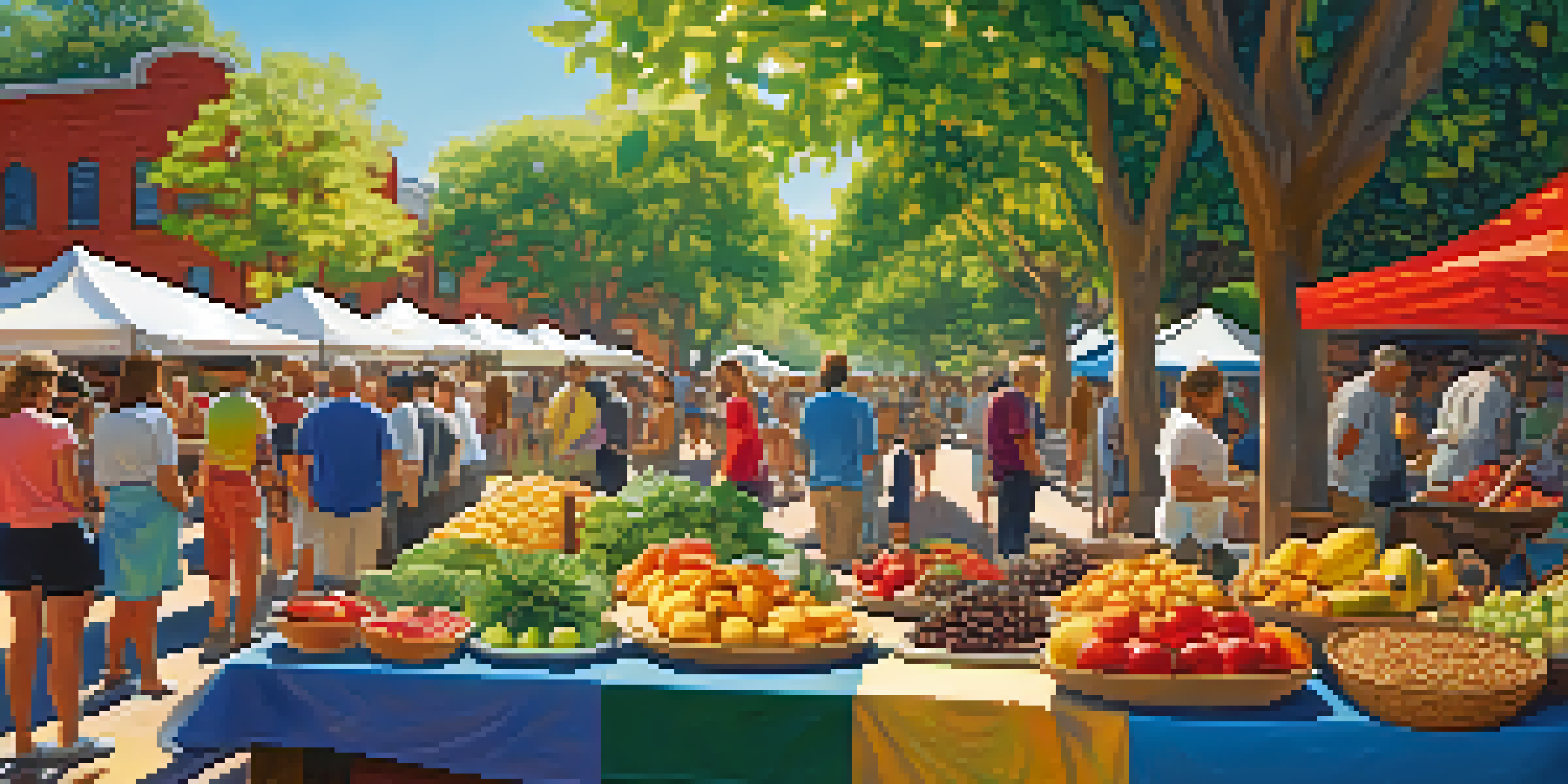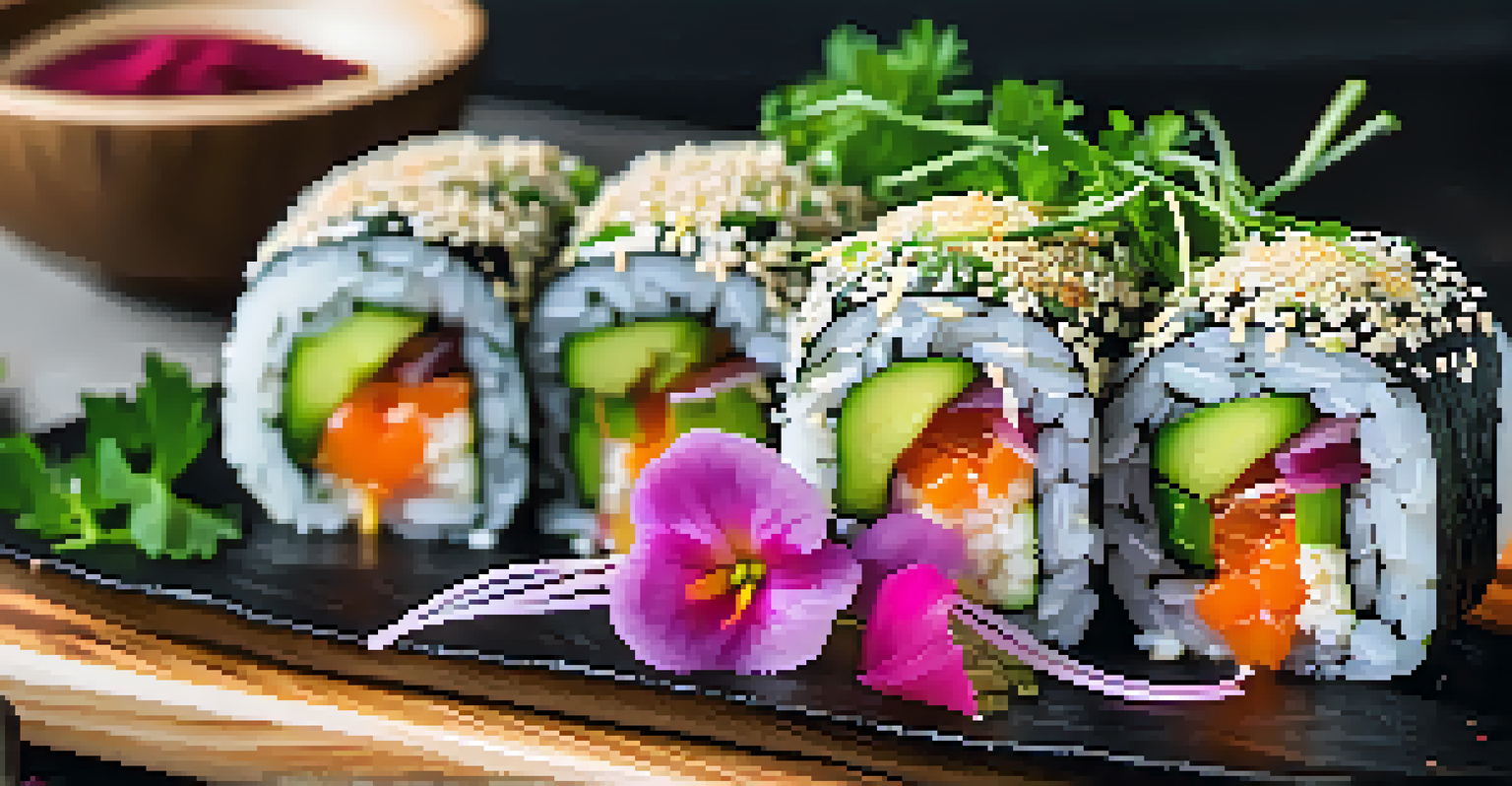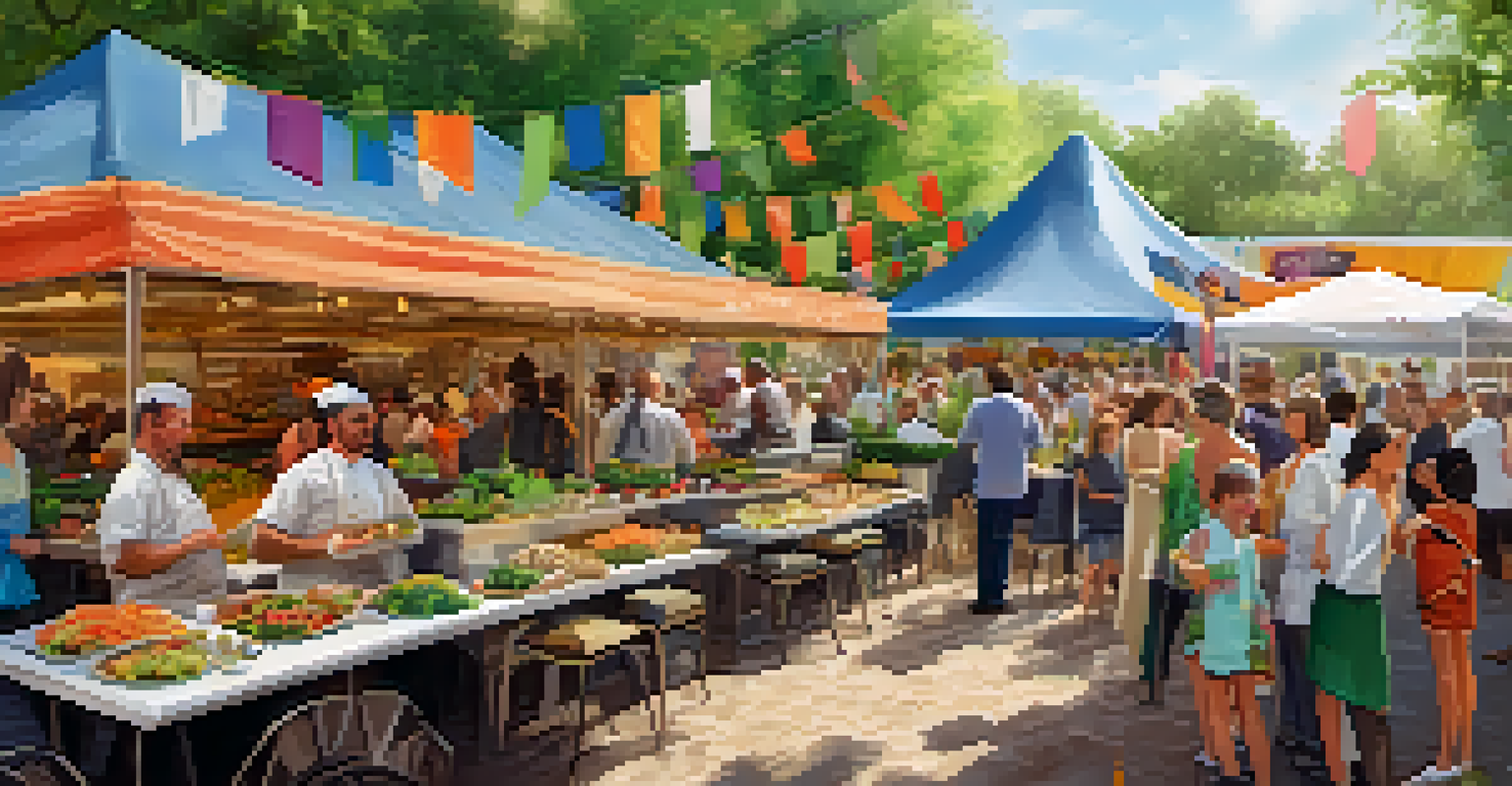Exploring the Rise of Raw Food at Culinary Festivals Worldwide

Understanding the Raw Food Movement and Its Appeal
The raw food movement emphasizes consuming unprocessed and uncooked foods, typically fruits, vegetables, nuts, and seeds. This lifestyle choice appeals to many who seek healthier eating habits and sustainable living. The premise is simple: cooking can destroy essential nutrients, so going raw is seen as a way to maximize health benefits.
Let food be thy medicine and medicine be thy food.
Raw food enthusiasts argue that fresh ingredients offer vibrant flavors and textures that cooked foods can't replicate. Think about biting into a crisp apple versus a baked one; the juiciness and crunch provide a different sensory experience. This appeal has led many to explore raw food not just at home, but also in social settings like culinary festivals.
As people become more health-conscious, the raw food movement has gained traction. Attendees at culinary festivals now expect to find innovative raw dishes that challenge traditional cooking methods. This shift reflects a broader trend—people are increasingly interested in what they consume and how it affects their bodies.
Culinary Festivals: A Platform for Raw Food Creativity
Culinary festivals serve as a vibrant stage for chefs and food enthusiasts to showcase their creativity. With the rise of raw food, these events have become hubs for experimentation and innovation. Chefs are now crafting visually stunning dishes that highlight the beauty and versatility of raw ingredients.

For instance, imagine a colorful raw vegan sushi roll made with zucchini instead of rice, packed with fresh veggies and served with a tangy dipping sauce. Such dishes not only taste good but also invite curiosity and excitement among festival-goers. It’s a delightful way to engage people in trying something new and healthy.
Raw Food Movement Gains Popularity
The raw food movement emphasizes unprocessed and uncooked foods, appealing to health-conscious individuals seeking vibrant flavors and nutrition.
The opportunity to sample various raw dishes at these festivals fosters a sense of community. Attendees often share their experiences and favorite finds, creating a buzz around raw food. This communal atmosphere encourages others to explore raw cuisine, further boosting its popularity.
The Role of Health Trends in Raw Food Popularity
The increasing awareness of health issues, such as obesity and chronic diseases, has made people more conscious about their diets. As a result, raw food has gained a reputation as a healthier alternative. Culinary festivals are responding to this trend by featuring raw food options that align with health-conscious lifestyles.
The future of food is not just about what we eat but how we eat it, and raw food reflects a deeper understanding of health and sustainability.
Many festival attendees are not just looking for delicious food; they also want to know what’s in it and how it benefits their health. This shift has prompted chefs to be more transparent about their ingredients, often highlighting their nutritional value. It's not uncommon to find dishes accompanied by descriptions of their health benefits, creating an educational aspect to the culinary experience.
The fusion of health awareness and culinary exploration has led to a wider acceptance of raw food. This trend is likely to continue as more people embrace the idea that what they eat can significantly impact their overall well-being.
Global Culinary Festivals Embracing Raw Food Trends
From the bustling streets of Tokyo to the sunny shores of California, culinary festivals worldwide are embracing raw food. Each region adds its unique twist, infusing local flavors and ingredients into raw dishes. This cultural exchange creates a rich tapestry of flavors and presentations that keep festival-goers excited.
For example, in Europe, raw food festivals often showcase organic and locally sourced ingredients, reflecting the continent's commitment to sustainable agriculture. Meanwhile, Asian festivals might incorporate traditional elements, such as pickling or fermenting, to enhance raw dishes. This blending of cultures makes the experience even more engaging.
Culinary Festivals Showcase Raw Cuisine
Culinary festivals have become platforms for chefs to creatively present raw dishes, fostering community and encouraging exploration of healthy eating.
As these festivals continue to grow in popularity, the global movement toward raw food is likely to expand. Chefs from different parts of the world are eager to share their innovations, pushing the boundaries of what raw food can be.
Sustainability: A Driving Force Behind Raw Food Choices
Sustainability has become a crucial topic in the culinary world, and raw food aligns well with these principles. By choosing fresh, local, and seasonal ingredients, raw food advocates minimize their carbon footprint. Culinary festivals are tapping into this trend by promoting sustainable practices and educating attendees on their environmental impact.
For instance, many festivals now feature farm-to-table concepts, where raw dishes are prepared using ingredients sourced directly from local farmers. This not only supports the community but also ensures that the food is fresh and nutritious. Attendees can feel good knowing their food choices contribute to a healthier planet.
As awareness of environmental issues grows, more people are likely to gravitate towards raw food. Culinary festivals provide the perfect setting to highlight these sustainable practices, making it an integral part of the raw food movement.
Challenges Faced by Raw Food Vendors at Festivals
While the rise of raw food at culinary festivals is exciting, it doesn’t come without challenges. One significant hurdle is the need for proper storage and preparation methods to maintain freshness and quality. Raw ingredients are often perishable, making it essential for vendors to have the right equipment on hand.
Additionally, some attendees may be hesitant to try raw dishes due to misconceptions. Many people associate raw food with blandness or lack of satisfaction. Vendors must work hard to showcase the delicious and diverse possibilities of raw cuisine, often through tastings or interactive demonstrations.
Sustainability Drives Raw Food Choices
The raw food movement aligns with sustainability principles by promoting local and seasonal ingredients, making it appealing to environmentally conscious consumers.
Despite these challenges, the passion for raw food continues to grow. Vendors who successfully navigate these obstacles often find a loyal following, encouraging more people to explore the raw food experience at festivals.
Future Trends: What’s Next for Raw Food at Festivals?
Looking ahead, the future of raw food at culinary festivals seems bright. As more people prioritize health and sustainability, we can expect to see an even greater variety of raw dishes. Chefs are likely to experiment with new ingredients and techniques, pushing the boundaries of raw cuisine.
Moreover, the integration of technology in food preparation could lead to innovative raw dishes that appeal to the tech-savvy generation. Imagine smart appliances that help create stunning raw desserts or drinks that enhance the flavor and health benefits of ingredients. This fusion of technology and culinary art could elevate the raw food experience.

As culinary festivals adapt to changing consumer preferences, raw food will likely become a staple feature. The ongoing exploration of flavors, health benefits, and sustainability will keep the conversation alive, ensuring raw food remains at the forefront of culinary innovation.